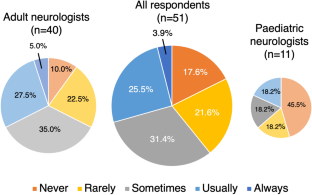

The MOG antibody can distinguish a spectrum of autoimmune demyelinating diseases from multiple sclerosis (MS). How does this test help with the diagnosis of inflammatory demyelinating diseases? The MOG Initiative is a research program for MOG Antibody Disease based at the Mass General Neuroimmunology Research Laboratory.Mayo Clinic has developed the first test available in the US to identify the myelin oligodendrocyte glycoprotein (MOG) antibody in patients' blood.
#Mog antibody disease treatment trial
The Neuroimmunology Clinic and Research Lab is pleased to be conducting a number of studies and soon, a clinical trial for a potential drug for this disorder. There are currently no FDA-approved medications for those with MOG antibody disease. MOG antibodies are also commonly found in adults with CRION (chronic relapsing inflammatory optic neuropathy). Less commonly, MOG may be revealed as AFP (acute flaccid paralysis) which causes sudden weakness and even paralysis. ADEM generally follows an infection and causes a single episode only. Among children, one common presentation of MOG antibody disease is acute disseminated encephalomyelitis (ADEM) in which inflammation occurs in the brain, as well as the spinal cord and optic nerves. MOG antibodies have been detected in a number of other rare CNS disorders. Simultaneous optic neuritis of both optic nerves is a characteristic feature of MOG antibody disease. More people with MOG suffer with optic neuritis than with transverse myelitis. Those with multiphasic disease – happening more than once – indeed remain on medications to avoid relapses. Therefore, not all patients with MOG have to be on immune-suppressing medications for their lifetimes. MOG patients tend to be younger than those with NMOSD, and the disease can be monophasic – happening only once – especially in children. Patients with MOG may experience optic neuritis - inflammation of the optic nerves, in which the protective myelin sheaths are damaged, and/or transverse myelitis - inflammation of a section of the spinal cord, in which the myelin is damaged. The biological function of MOG is not yet completely clear, but we know that it is a target of an aberrant immune response in people with this disorder.Īs one of a spectrum of opticospinal inflammatory disorders, MOG shares many characteristics with NMOSD. Of NMOSD patients who test negative for the aquaporin-4 antibody, approximately 40% have MOG antibodies. Many labs around the world have adopted the protocol. The first article that proposed a protocol that reliably detects the MOG antibody was published in 2015.

But unlike NMO, which generally targets a water channel called aquaporin-4 on astrocytes, the immune dysfunction in MOG targets the myelin oligodendrocyte glycoprotein on the outermost myelin membranes surrounding the optic nerves, spinal cord and brain. Like NMO, MOG antibody disease is an autoimmune disease of the central nervous system (CNS). Now, MOG antibody disease is considered its own discrete diagnosis. In recent years, due to improvements in testing for MOG antibody in people, physicians can now distinguish those with MOG antibody disease from patients with multiple sclerosis or neuromyelitis optica. Myelin oligodendrocyte glycoprotein (MOG) is a myelin protein that has long been important in mouse models of demyelinating disease, causing loss or destruction of the protective sheath around nerves. Klawiter with a patient in the Neuromyelitis Optica Clinic Billing, Insurance & Financial Assistanceĭr.


 0 kommentar(er)
0 kommentar(er)
